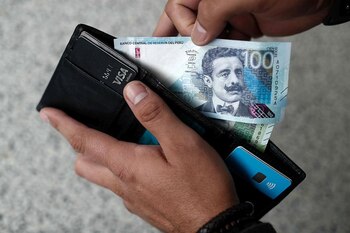
The time has come that several workers have been waiting for. The payment of profits turns out to be one of the events that the members of companies pay the most attention to, although there are still several doubts about its nature. This brief note seeks to resolve the most basic questions regarding the benefit that puts thousands of employees on alert.
It is important to note that profits are a percentage of net income; that is, of the gains that result after deducting the corresponding taxes and deductions. Depending on the category in which the company to which it is linked, it is that the percentage mentioned is known. If it is a fishing, telecommunications or industrial company, 10% of the profits are taken into account. If it is a mining or trade and restaurant company, it will be 8% and 5% for the rest of the activities.
Regarding the date of payment, current legislation states that this must be made within a maximum period of 30 days after the company complies with the filing of the annual Income Tax (IR) affidavit. In this regard, the schedule of the Income Tax, with the last digit of the RUC published by Sunat, will be taken into account. From the fortnight of March, the corresponding payment begins to be made.

Once the deadline has expired, and upon the written request of the workers to pay, which may be by simple letter, the participation in profits that have not been delivered generates default interest equivalent to the legal interest set by the Central Reserve Bank of Peru.
THE BENEFICIARIES
Those who are part of a private company that generates third-rate income and has more than twenty workers, are obliged to make the payment of profits. Employees must have completed the maximum working day established in the company either by indefinite contract or subject to modality. Workers with working hours less than the established maximum, will participate in the profits in proportion to the working day.
Those self-managed, individual, cooperative and communal enterprises, as well as civil societies and enterprises that do not exceed 20 workers are exonerated from paying profits.
It is important to note that the days worked will be taken into account as well as absences considered as legal assistance, among which are union leave, days of absence due to the closure of premises due to the commission of tax offences, non-working days due to a null dismissal in case of replacement, hours of breastfeeding and perfect suspension of work due to fortuitous events or force majeure.
Former workers who left their responsibilities before the date on which profits are distributed, are entitled to collect the corresponding amount within the statutory limitation period.
THE PROCEDURE
First, you get the amount of money that will be distributed among the workers. Then, the following operation is performed:
A portion of the profits is calculated based on your days worked. You get the average value that a day's work has generated from employees to get that result. Example: If it is determined that the working day generates 3 soles and you worked 180 days, it is multiplied and this part of your profits equals 540 soles.
The other party considers your income as a worker. The amount of money to be distributed is divided by the sum of the salary of all the workers, that result is multiplied by everything you have earned in the year. Example: If the division is 0.02 cents and you have won 27 thousand soles, they multiply and this part of your profits also equals 540 soles.
Finally, both calculations are added together. In the examples we have given, the total profit result is 1080 soles.
KEEP READING
Últimas Noticias
Debanhi Escobar: they secured the motel where she was found lifeless in a cistern

The oldest person in the world died at the age of 119

Macabre find in CDMX: they left a body bagged and tied in a taxi
The eagles of America will face Manchester City in a duel of legends. Here are the details

Why is it good to bring dogs out to know the world when they are puppies




